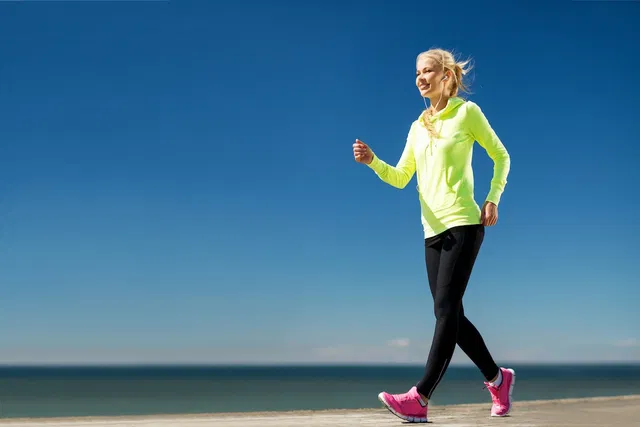How to improve your health, exercise!

Our modern societies are faced with a growing number of patients suffering not only from chronic diseases, whether pulmonary, cardiovascular or metabolic (metabolic syndrome, diabetes, obesity, etc.), but also from cancers. In addition to this list – which is not exhaustive – Western countries are also faced with the aging of their populations. Result: healthcare costs are exploding.
However, a very inexpensive treatment/medication exists. Its positive effects on some symptoms, as well as on morbidity, autonomy and quality of life of patients for the above-mentioned diseases or the elderly , are scientifically established. It is physical exercise.
Regularly, new scientific studies demonstrate the beneficial role of regular physical activity in the prevention or treatment of diseases. According to the World Health Organization (WHO), a sedentary lifestyle is the leading cause of preventable mortality . Practicing moderate physical activity (walking, swimming, gardening, etc.) for at least 3 hours per week or intense activity (running, etc.) for at least 20 minutes, 3 times per week reduces the risk of premature mortality by 30%.
In medicine, it is traditional to prescribe the most effective treatment with the fewest risks or side effects. Physical exercise meets this dual requirement in many cases, as long as it is well calibrated and executed! Here is what science tells us about its benefits.
Effects of endurance training
In the general population, endurance training is known to lead to improvements in physical fitness. Thus, when one is well trained, one is able to engage in physical activity for longer and/or at a higher intensity.
These improved performances after training are partly linked to pulmonary, cardiovascular and muscular adaptations leading to an improvement in our capacity to consume oxygen .
Indeed, oxygen is the major “oxidant” involved in the reactions that provide energy to our muscle cells, and endurance training improves all the body’s functions involved in the uptake, transport and use of oxygen.
Thus, after training, maximum lung abilities and capacities (involved in oxygen uptake) are improved.
If the cardiac output (involved in the transport of oxygen and corresponding to the product of the heart rate by the stroke volume) remains the same for a given intensity after training, its modalities change. Indeed, with endurance training, the heart chambers widen, which allows more blood to be sent into the body with each heartbeat (the stroke volume increases). As a result, the heart will beat less quickly after training (decrease in heart rate) for a given activity intensity.
Furthermore, since the maximum heart rate is hardly affected by training, but the stroke volume is increased, the maximum cardiac output is greatly increased by endurance training. This cardiac adaptation is of the utmost importance for the blood and therefore oxygen supply of the body and the muscles in particular.
Finally, muscles (striated skeletal, involved in movement and which ultimately use oxygen) are also the seat of many adaptations . The number of small blood vessels (capillaries) that irrigate the muscle is greatly increased by training, which improves the oxygen supply to the tissue. In addition, under the constraints of regular physical activity, the muscle “strengthens”: it becomes a little more voluminous (slight hypertrophy of muscle fibers) and stronger.
Last point: all the “muscular equipment” (in other words the so-called “aerobic” metabolic pathways) which are used for the combustion of fuels (carbohydrates or lipids) and the oxidant (oxygen) to provide the energy necessary for muscular contraction is also improved.
Physical exercise and metabolic diseases
When a person suffering from a metabolic disease ( metabolic syndrome , type 2 diabetes, obesity, etc.) engages in physical activity, they benefit from all the adaptations mentioned above; above all, other adaptations occur which help to counteract the harmful effects of the pathology.
Indeed, during exercise, the muscle consumes lipids and especially carbohydrates. As a result, these substrates enter the muscle cells to be used. They thus accumulate less in the blood, reducing their contribution to the development of metabolic and cardiovascular diseases. As a result, hyperglycemia, insulin resistance, glucose intolerance, bad cholesterol, hyperlipidemia and high blood pressure (among others) will decrease .
All of this is intended to reduce the risks and symptoms of metabolic syndrome, type 2 diabetes and obesity. Of course, if physical activity is combined with a diet that is too fatty, too salty and too sweet, these benefits will be lost…
Physical exercise and aging
Aging is inevitable and it affects all levels of the body: pulmonary, cardiac, vascular and muscular. The consequence is unstoppable: physical fitness decreases.
On the other hand, what is remarkable is that the curves of sedentary, active and highly trained populations evolve in an almost parallel manner. Thus, the physical fitness of active people remains at all ages, superior to that of sedentary people.
In practice, we notice that the physical abilities of a sedentary 45-year-old person and an active 65-year-old person are similar ! The challenge is therefore to remain active throughout life. In this way, we can hope to delay the onset of pathologies linked to inactivity, such as metabolic diseases.
Being physically active can not only help you live longer, but better yet, it can help delay the onset of addiction .
Physical exercise and cancer
Cancer is often accompanied by muscle atrophy (cachexia), loss of strength and chronic fatigue, leading to inactivity. The disease also promotes anxiety and even depression. All contribute to a deterioration in the quality of life of patients. In addition, some of these traits can be aggravated by treatments such as chemotherapy.
Conversely, physical activity can counteract most of the harmful effects ).
Furthermore, epidemiological studies have shown that an active lifestyle including regular physical activity protects against the development of colon and breast cancer ( 25 to 30% reduction in the risk of occurrence ) and that physical exercise, even after diagnosis of breast cancer, can reduce the risk of death linked to the disease .
Physical exercise and anxiety, stress or depression
A scientific study has shown that people who had carried out regular physical activity showed a reduction in symptoms of stress and anxiety , compared to a control group without physical activity.
Other work has also shown an inverse relationship between physical fitness level and depressive symptoms, and that regular physical activity is associated with a lower incidence/prevalence of depression .
Physical exercise and sickle cell disease
Sickle cell disease is a genetic disease that causes the production of abnormal hemoglobin. The consequences include severe anemia that drastically reduces the physical fitness of patients: the most seriously affected patients are unable to climb a flight of stairs without stopping to recover.
As a precaution against certain risks linked to excessive physical effort (vaso-occlusive crises, acute thoracic syndrome), patients are too often confined to hypersedentary behavior.
However, if physical exercise is well calibrated, it turns out to be not only risk-free, but above all beneficial: our studies have in fact demonstrated that all pulmonary, cardiovascular and muscular levels are improved .
Conclusion and perspectives
All these results indicate how important the recommendations regarding regular physical activity are.
Physical activity can be used prophylactically, to prevent the onset or worsening of a disease, or as a therapeutic means, by being integrated into the therapeutic arsenal of patient care, in order to help eliminate or relieve some of their symptoms.
The main question is no longer whether physical activity is beneficial, but rather to specify its type, doses, intensity, methods of application and indications according to the individuals and the stages of the pathology for which we aim to improve management.
Such physical activity, regular, structured in its implementation methods (time, duration, type of exercise, etc.) and individualized becomes a real “physical training”, the objective of which is not to win competitions, but to avoid losing health!



